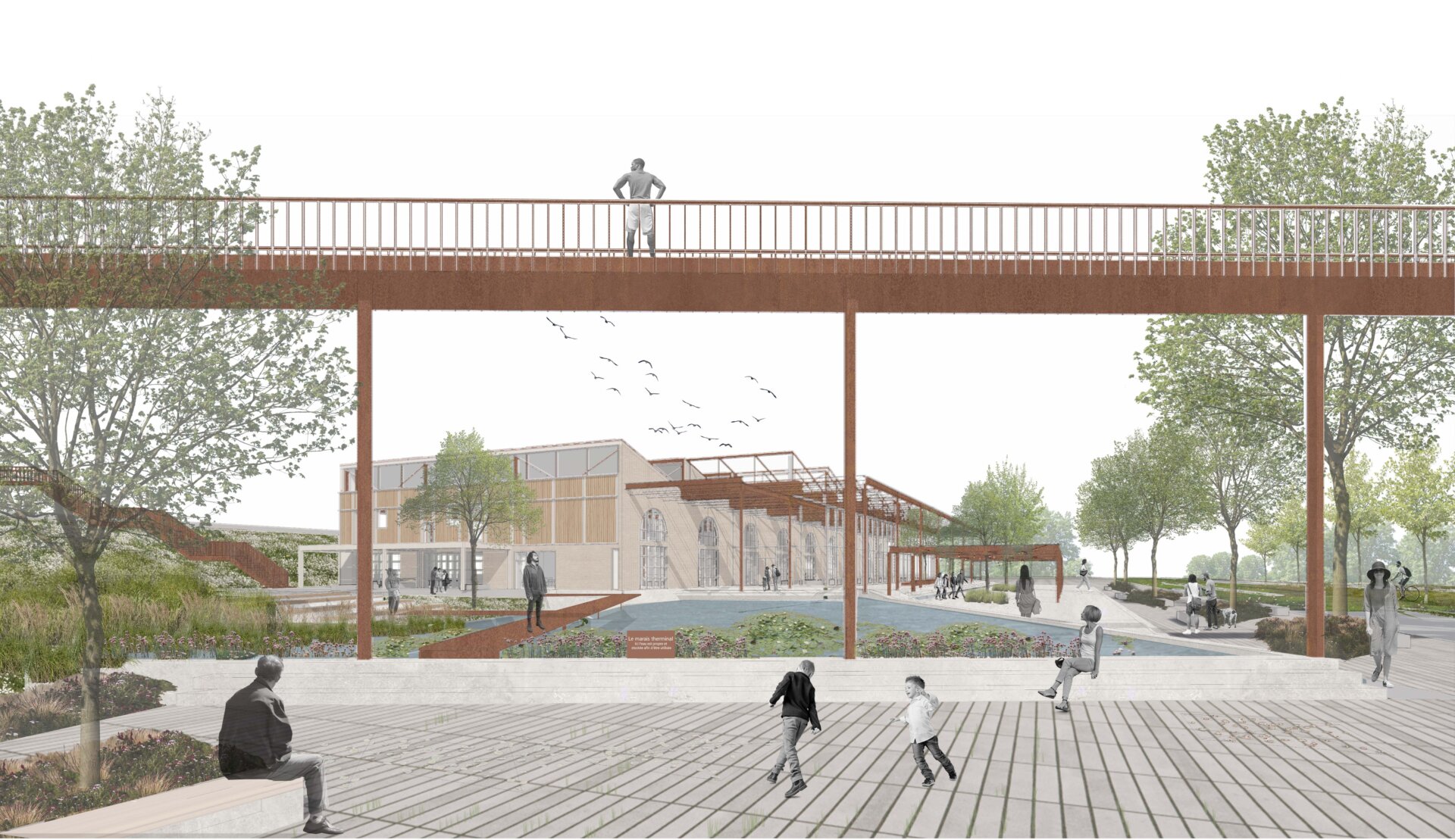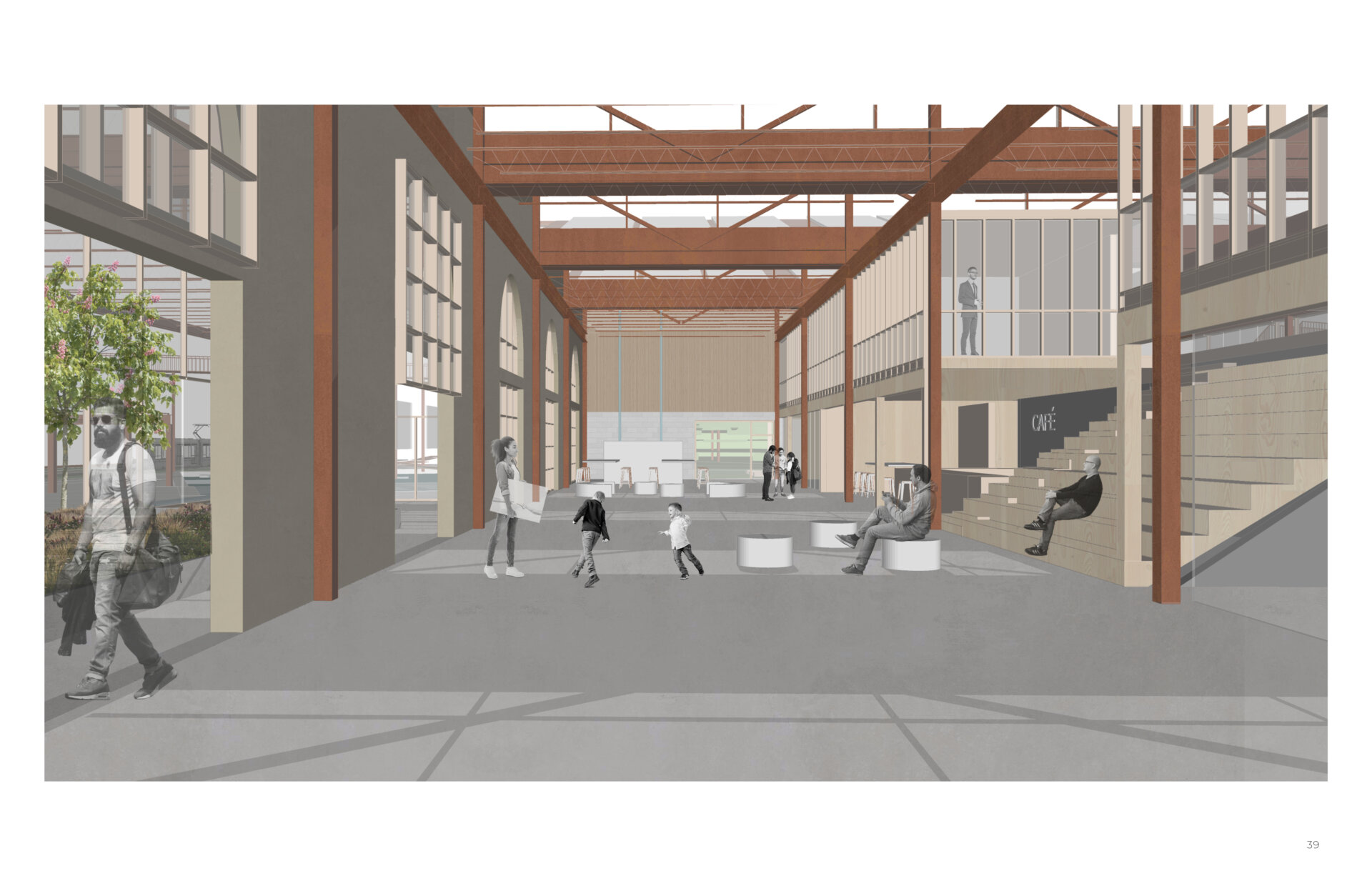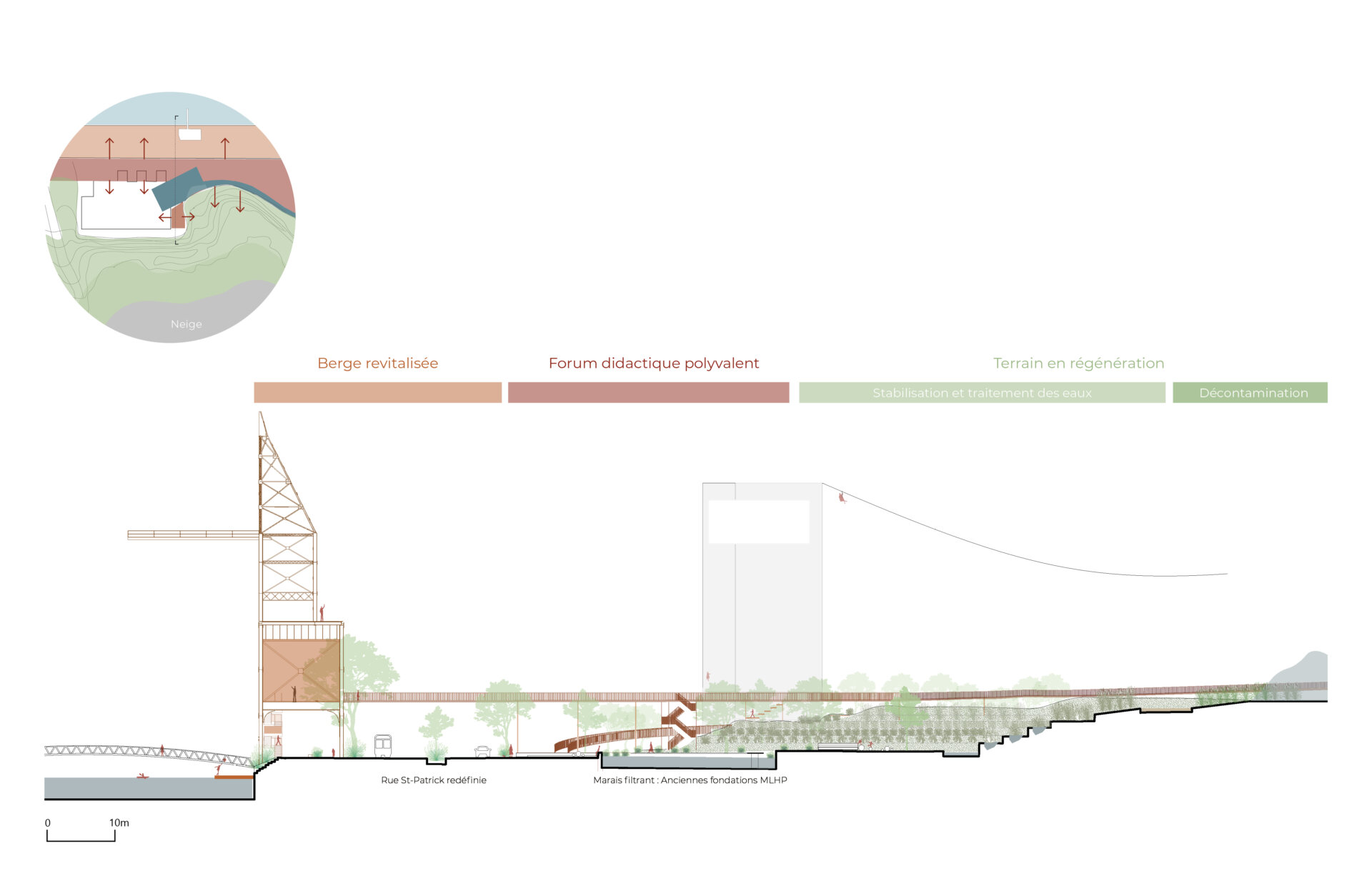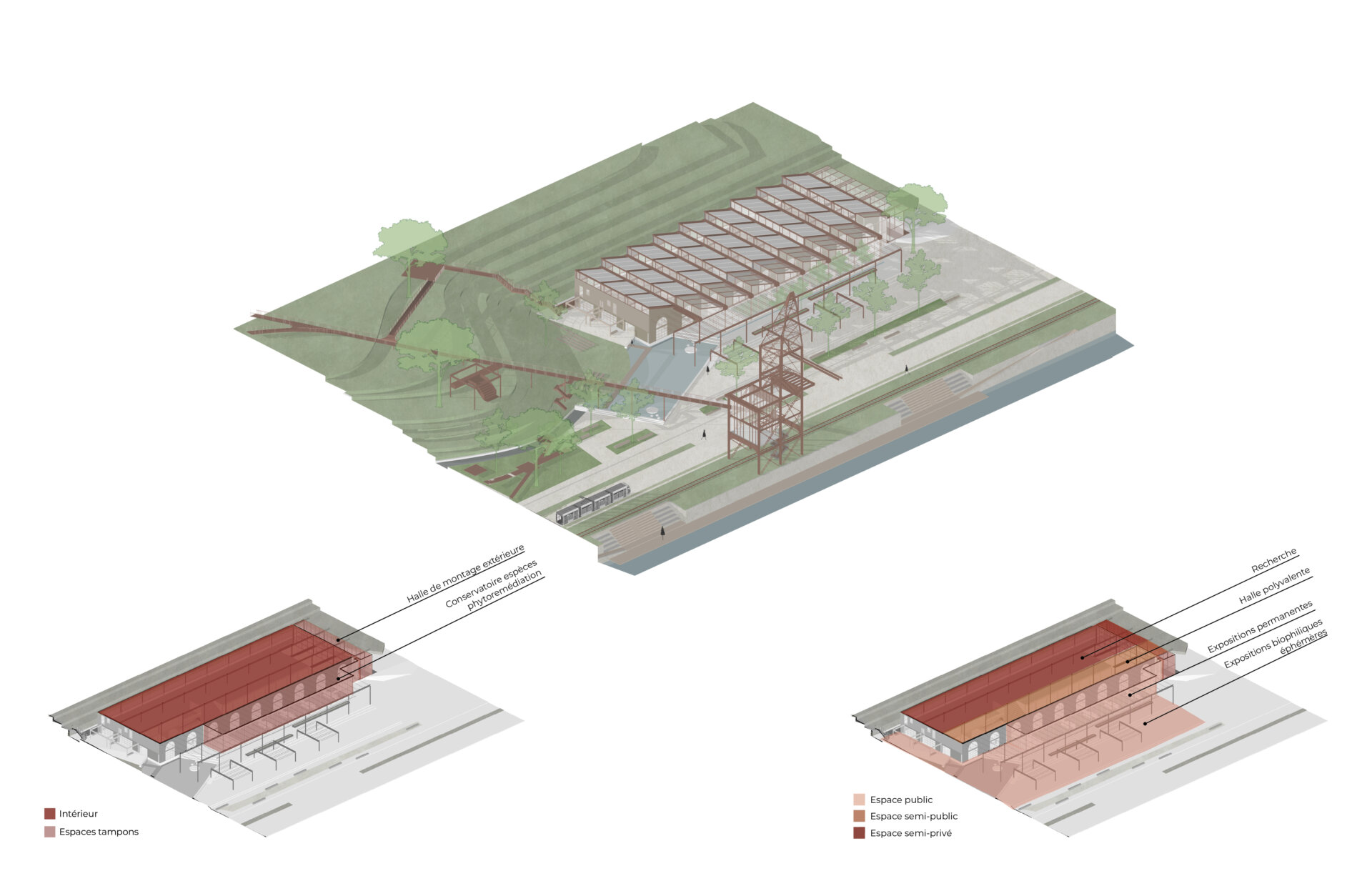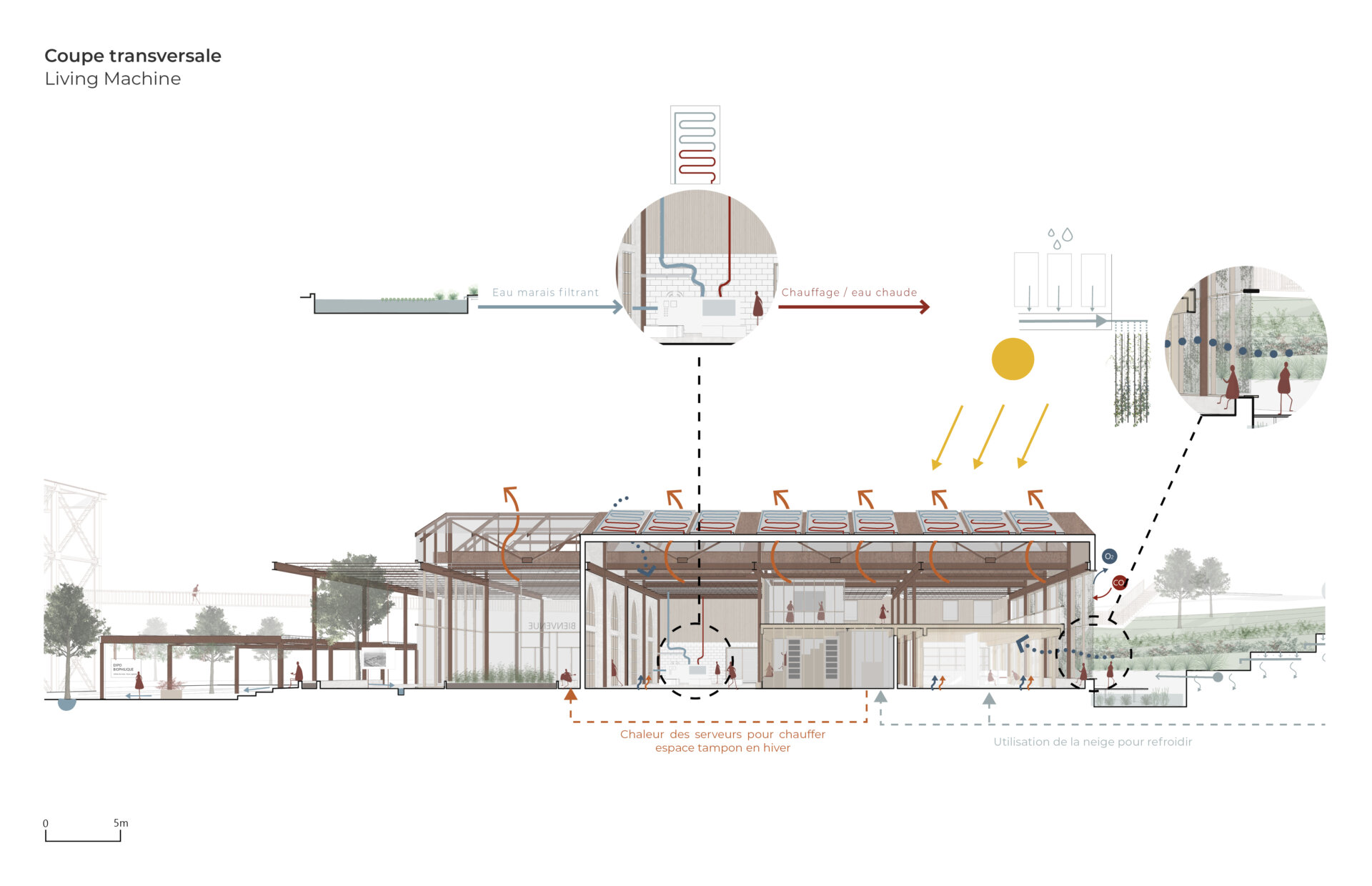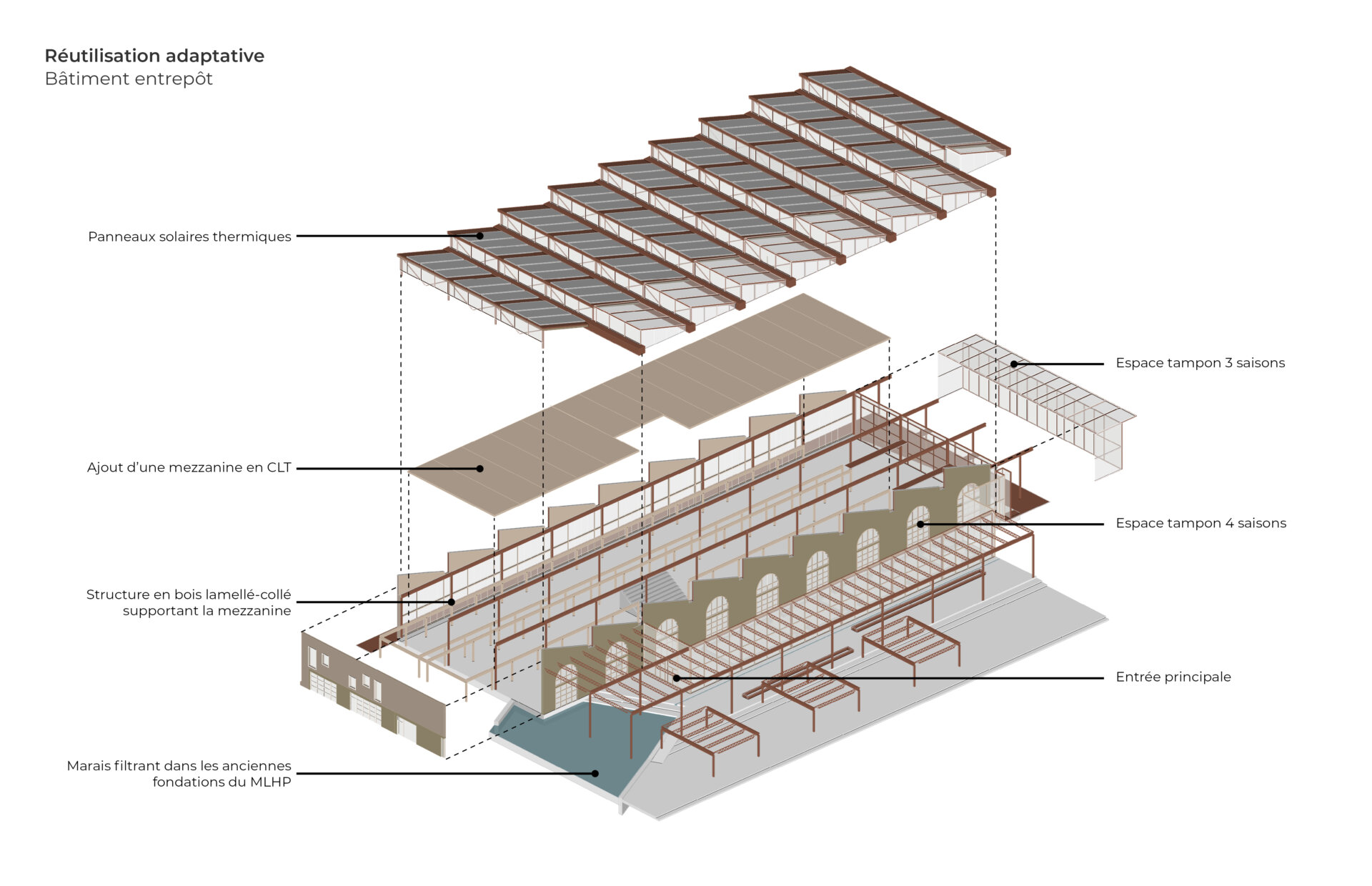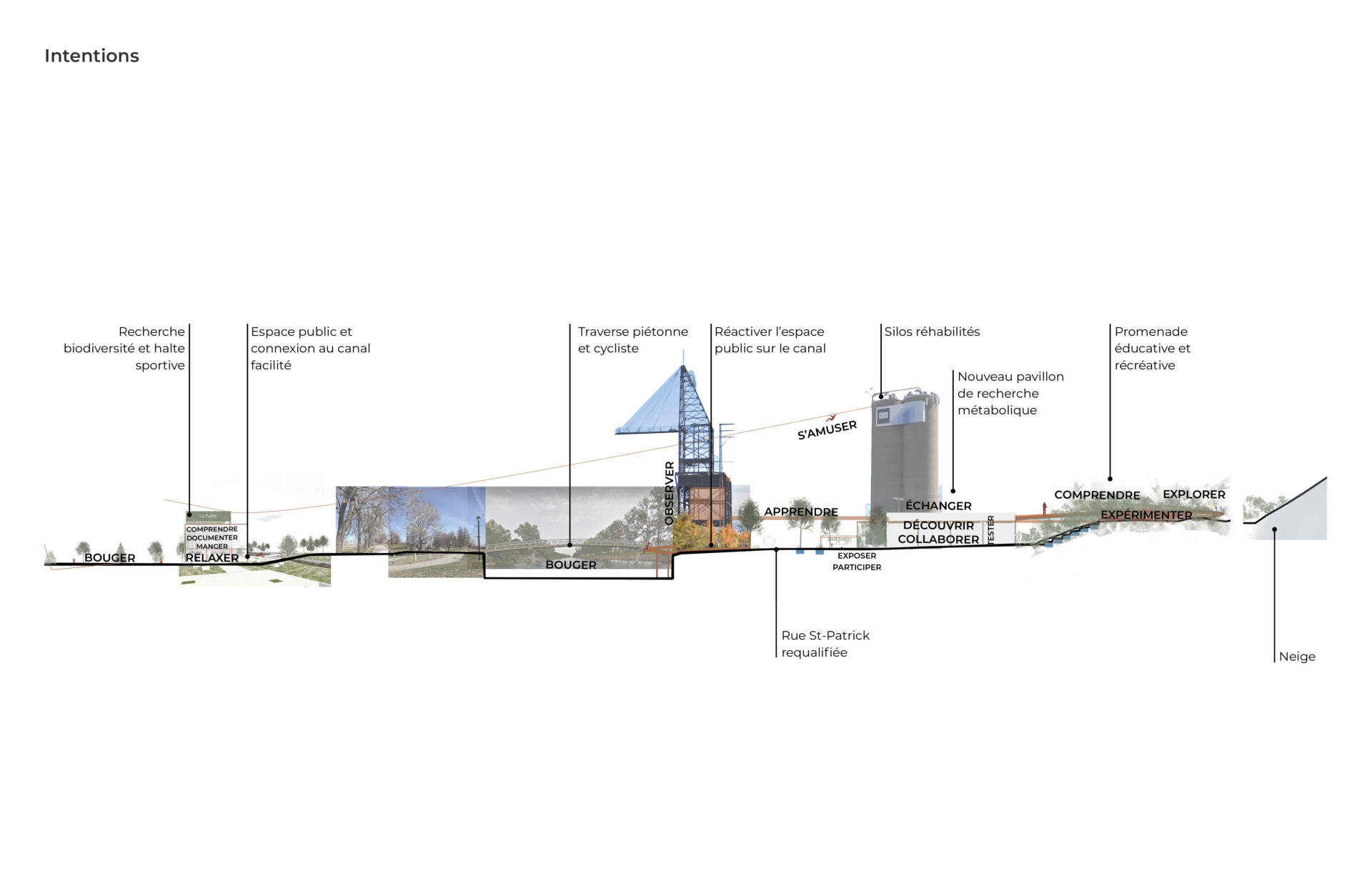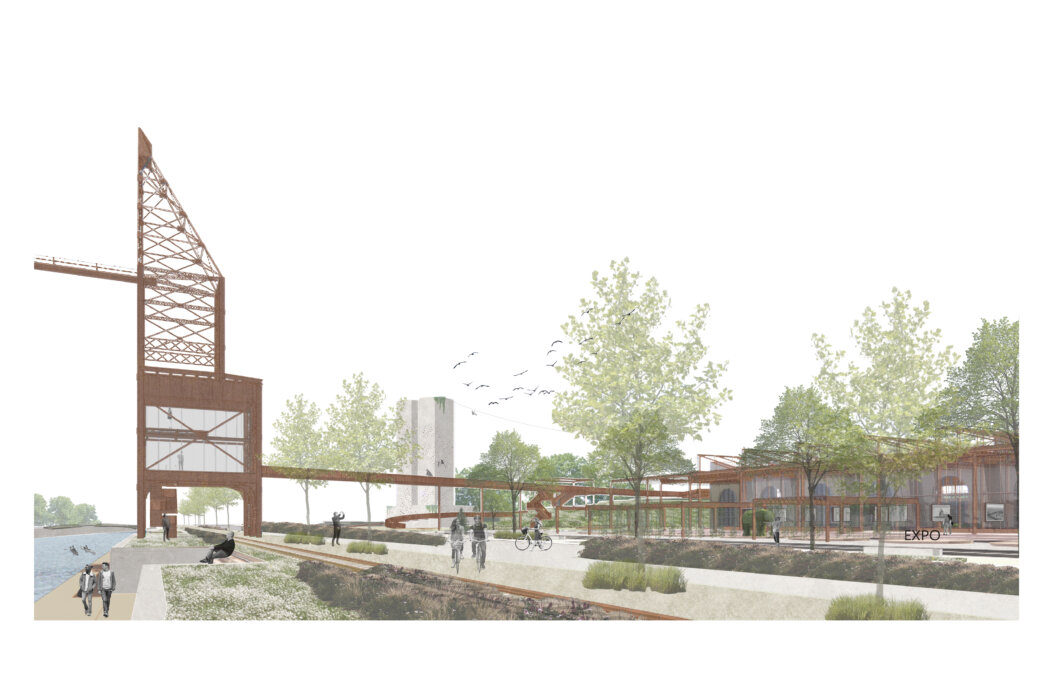
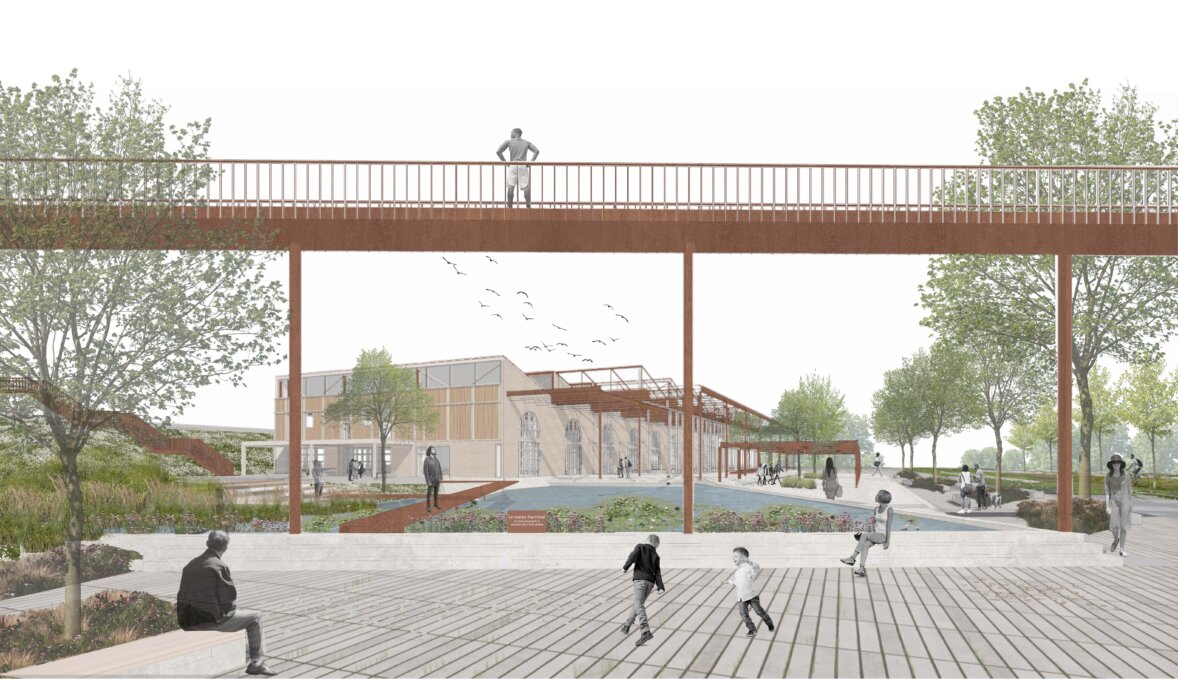
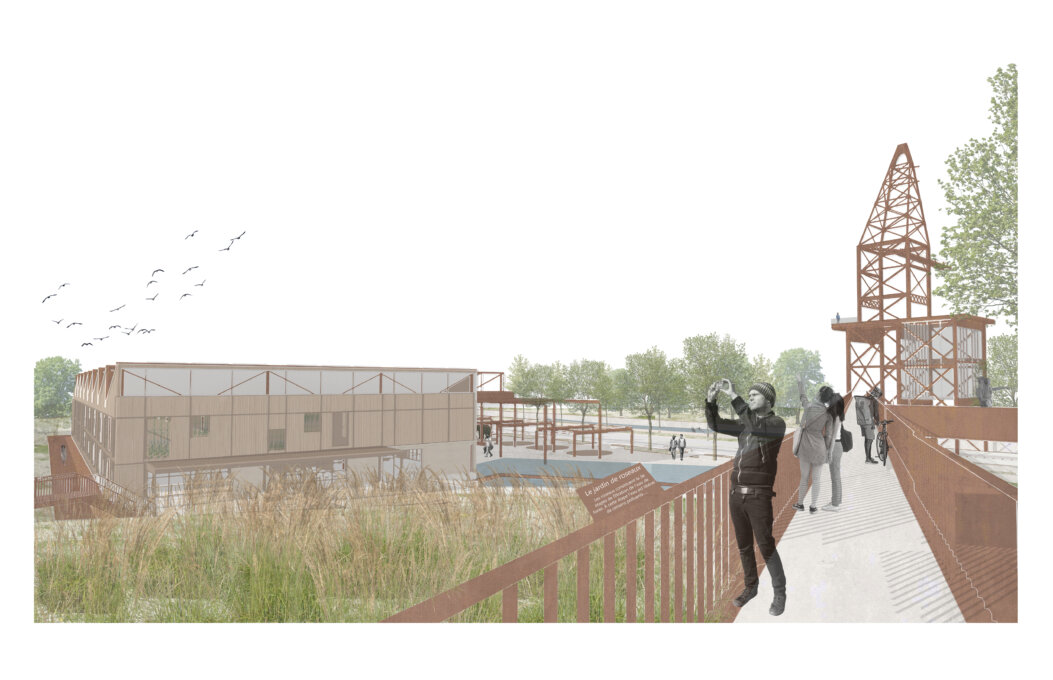

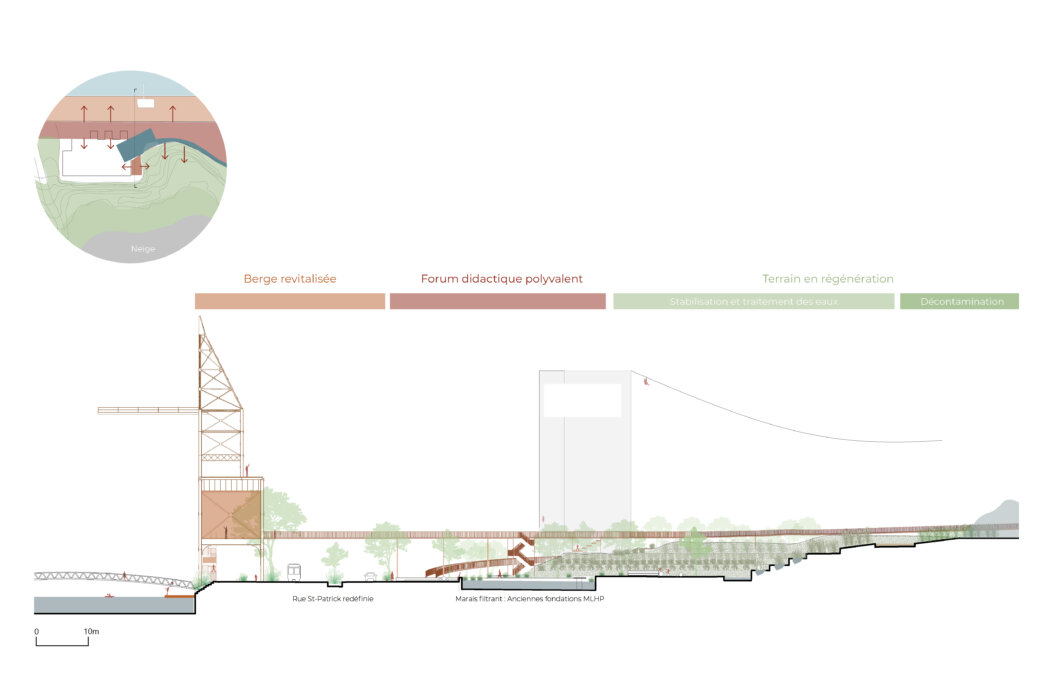
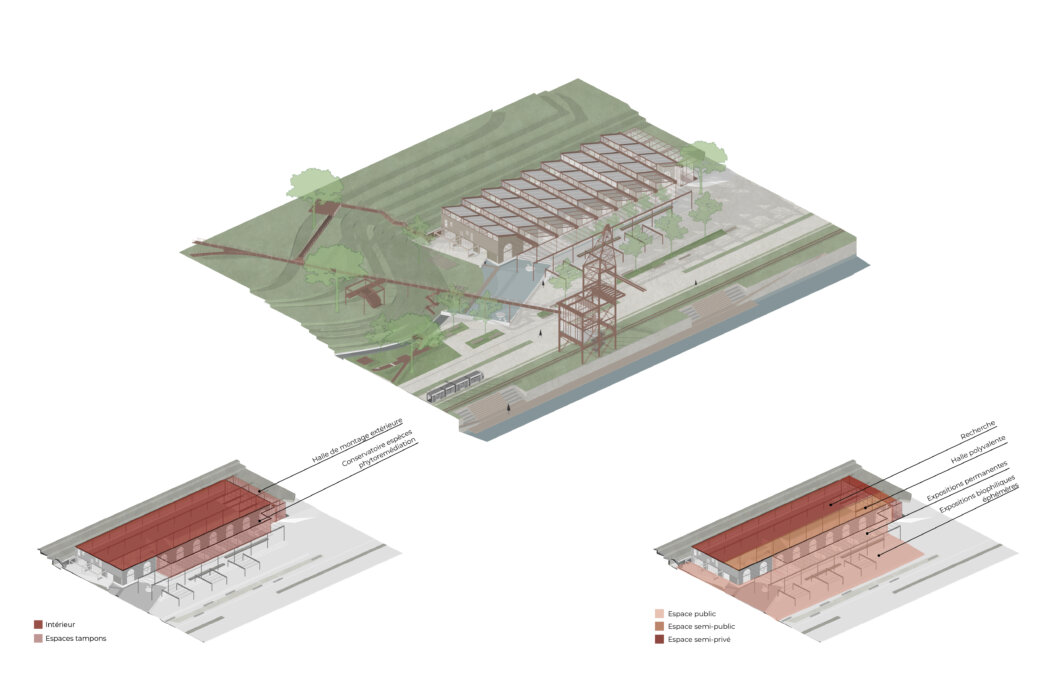
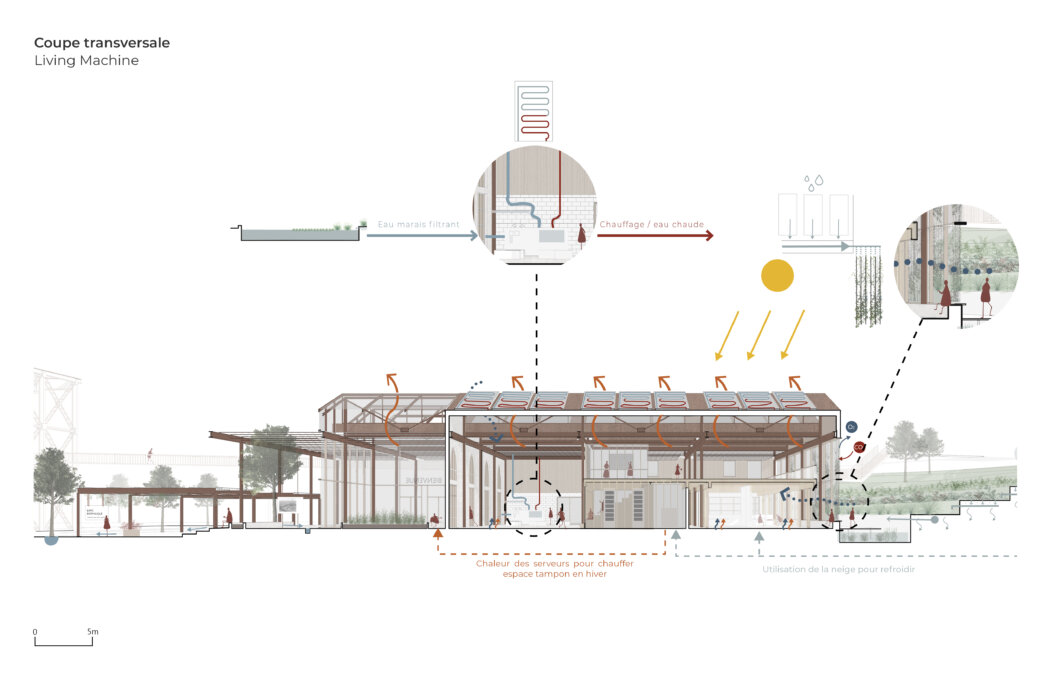
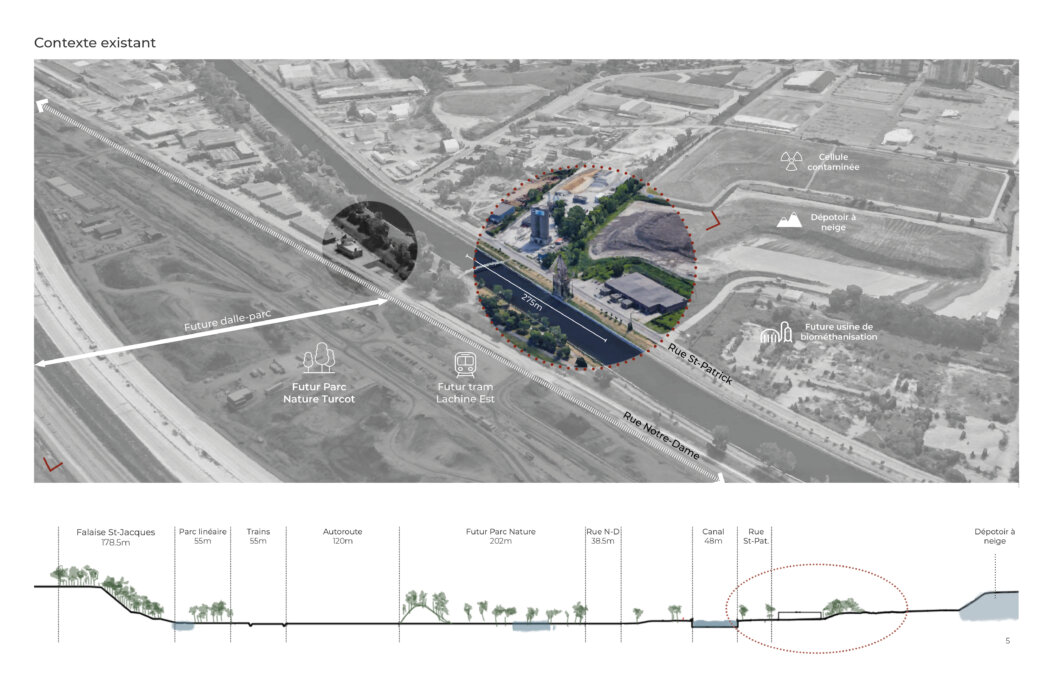
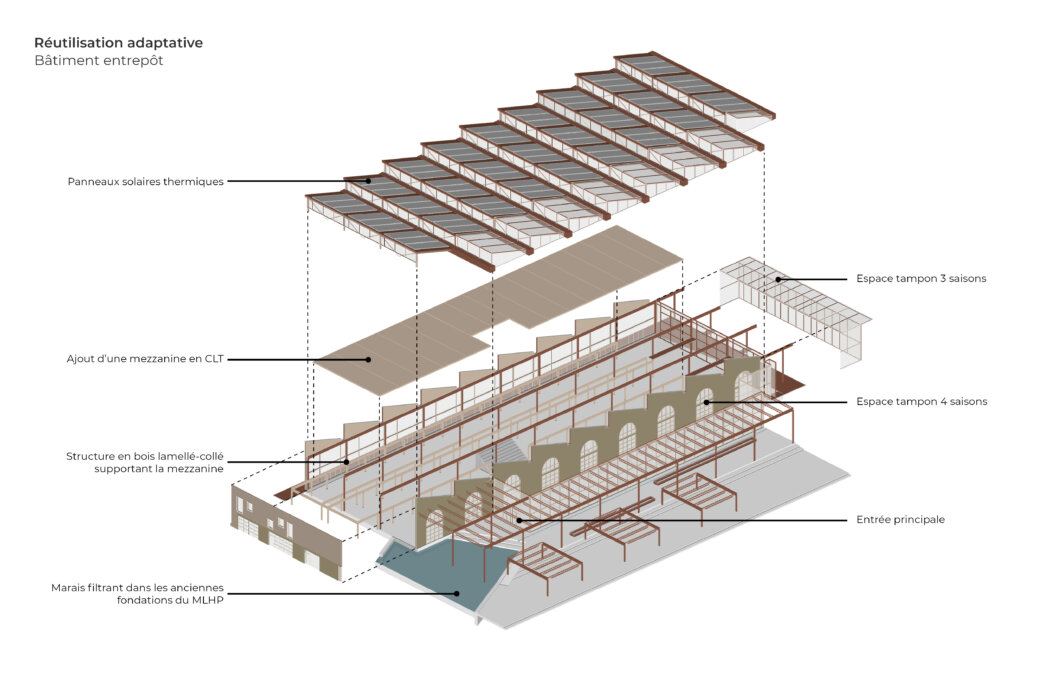
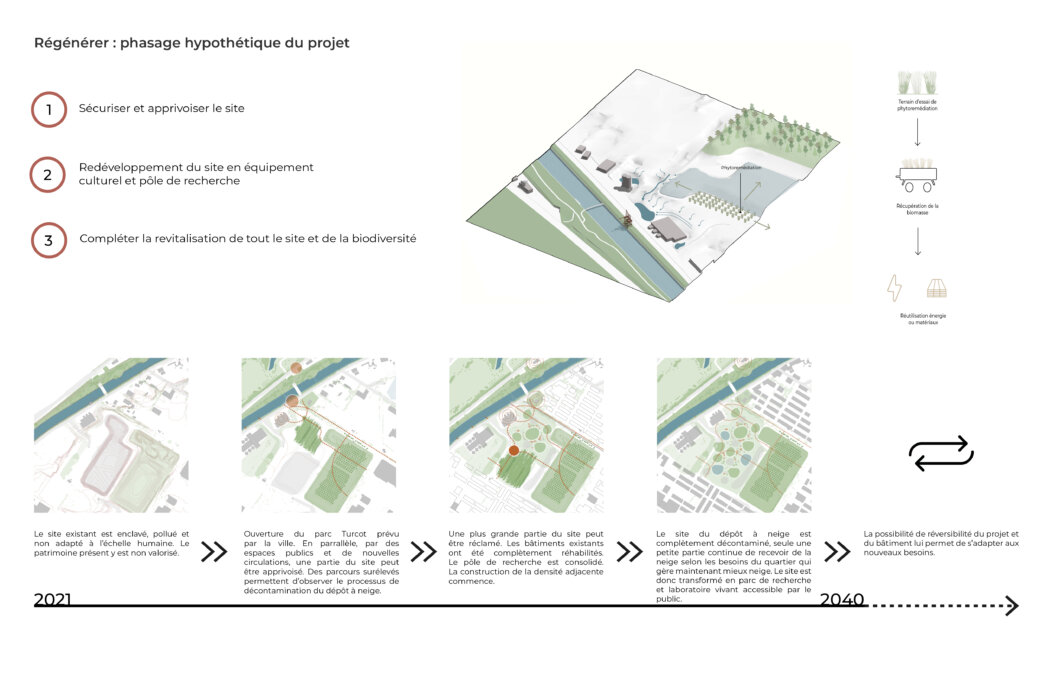

Share to
L’alternateur du secteur industriel
By : Frédérique Côté
GRANDS PRIX DU DESIGN – 15th edition
Discipline : Student
Categories : Students work / Student - Architecture
Vestige of the industrial boom or witness to the mistakes of the past? Probably both.
As you approach the site, the LaSalle Coke crane stands in the landscape like a lighthouse on the Lachine Canal. Its footbridge overhangs the water, and its reflection recalls the site's past as an important vector of Montreal's energy and industry. Now obsolete, the crane is abandoned, as is the adjacent land, which is enclosed and polluted. Since then, the history of the site remains dormant except for the presence of harmful activities. Even in summer, the noise of the snow dump trucks can be heard. The polluted melt water flows into the sewers on St-Patrick Street. The infrastructures are built without consideration of the environment and cause several urban ecological deficiencies. The desire for efficiency of anthropic systems is at the expense of natural systems and denies the possible interdependence between them.
Resulting from a research session and carried out in the workshop mentored by Mr. Daniel Pearl, the project proposes to transform problems into opportunities to anchor the sector in a more sustainable perspective. Indeed, the site presents potentials of urban metabolism, that is to say, of harmonizing incoming and outgoing flows, of providing ecological services, and of offering places of culture and leisure. More specifically, the project suggests a research center to bring a sense of civic-mindedness to the area and to initiate the adoption of innovative practices. The project is presented as a new cultural facility that redesigns the notions of education and vulgarization.
In addition, the project proposes to regenerate the site by implementing green infrastructures. The existing snow mound will gradually give way to phytoremediation. Steel footbridges, in keeping with the historical framework, offer a new walkway to citizens and allow them to tame the site and understand the decontamination processes. One of these walkways links the LaSalle Coke crane to the high point of the site. Its columns rest on old foundations, remnants of the first factory that occupied the site. These foundations now surround a filtering marsh. The crane is preserved and offers spaces for observation and exhibition. As for the building, the existing steel structure is stripped and frames a public space parallel to the canal. The addition of a new roof ensures the flexibility of the building while celebrating the water cycle. Inside, the space is enlivened by places for research, learning and collaboration. The architectural setting is conducive to spontaneous encounters between the various professionals, the academic world and the community.
In short, the project combines research, culture and nature to be a lever for revitalizing the industrial sector along the canal. It demonstrates the possibilities of the future through an optimistic narrative based on a more human scale. The rehabilitation of existing heritage and the requalification of public space are strategies for opening the site to the community and enhancing the canal landscape. The research pole, as a didactic tool, offers an understanding of the opportunities to the population in order to pollinate changes and to make a new discursive framework appear in various spheres. As environmentalist Baba Dioum states, "In the end we will conserve only what we love. We will love only what we understand. We will understand only what we are taught."
Collaboration



